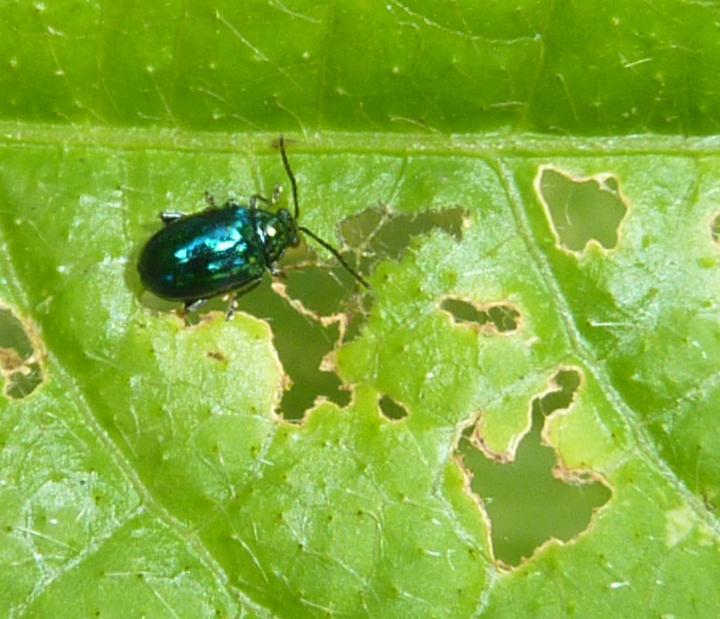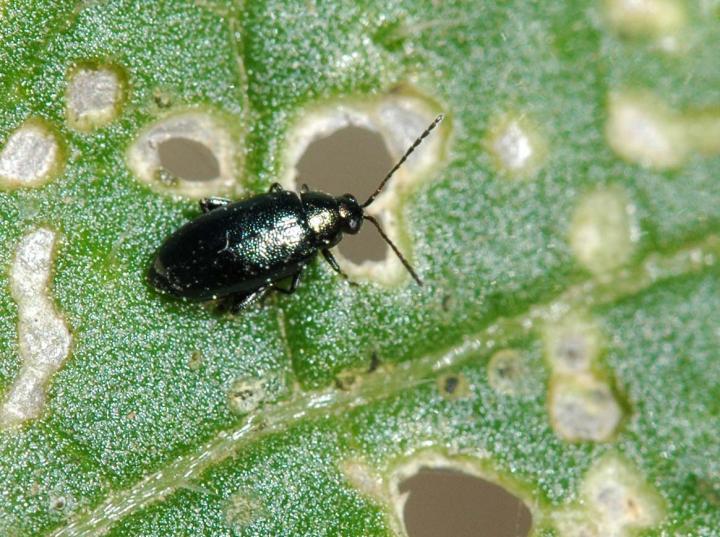
Flea beetles can be very destructive to a wide variety of plants, so be sure to take preventative measures.
How to Identify and Get Rid of Flea Beetles
ADVERTISEMENT
This article says that the flea beetles are repelled by nasturtiums but actually, they seem to be ravaging mine this year.
Yes, nasturtiums can be used as a trap crop; they will take the focus of the flea beetles away from the more valuable crops you are growing.
they live indoors and will jump
This totally did NOT work, nor did placing peppermint leaves on the eggplants. I saw more flea beetles after I sprayed than before. I think they loved it. I only have 6 eggplants, so I picked the beetles off and put them in soapy water. That killed them!
This totally did NOT work, nor did placing peppermint leaves on the eggplants. I saw more flea beetles after I sprayed than before. I think they loved it. I only have 6 eggplants, so I picked the beetles off and put them in soapy water. That killed them!

 Photo Credit: University of California White Mountain Research Center. Flea beetles can cause leaves to appear lacy after they’ve caused a lot of damage.
Photo Credit: University of California White Mountain Research Center. Flea beetles can cause leaves to appear lacy after they’ve caused a lot of damage. Photo Credit: Jeff Hahn, University of Minnesota Extension. If you didn’t take preventative measures, it might be impossible to stop the flea beetle damage.
Photo Credit: Jeff Hahn, University of Minnesota Extension. If you didn’t take preventative measures, it might be impossible to stop the flea beetle damage.







Comments